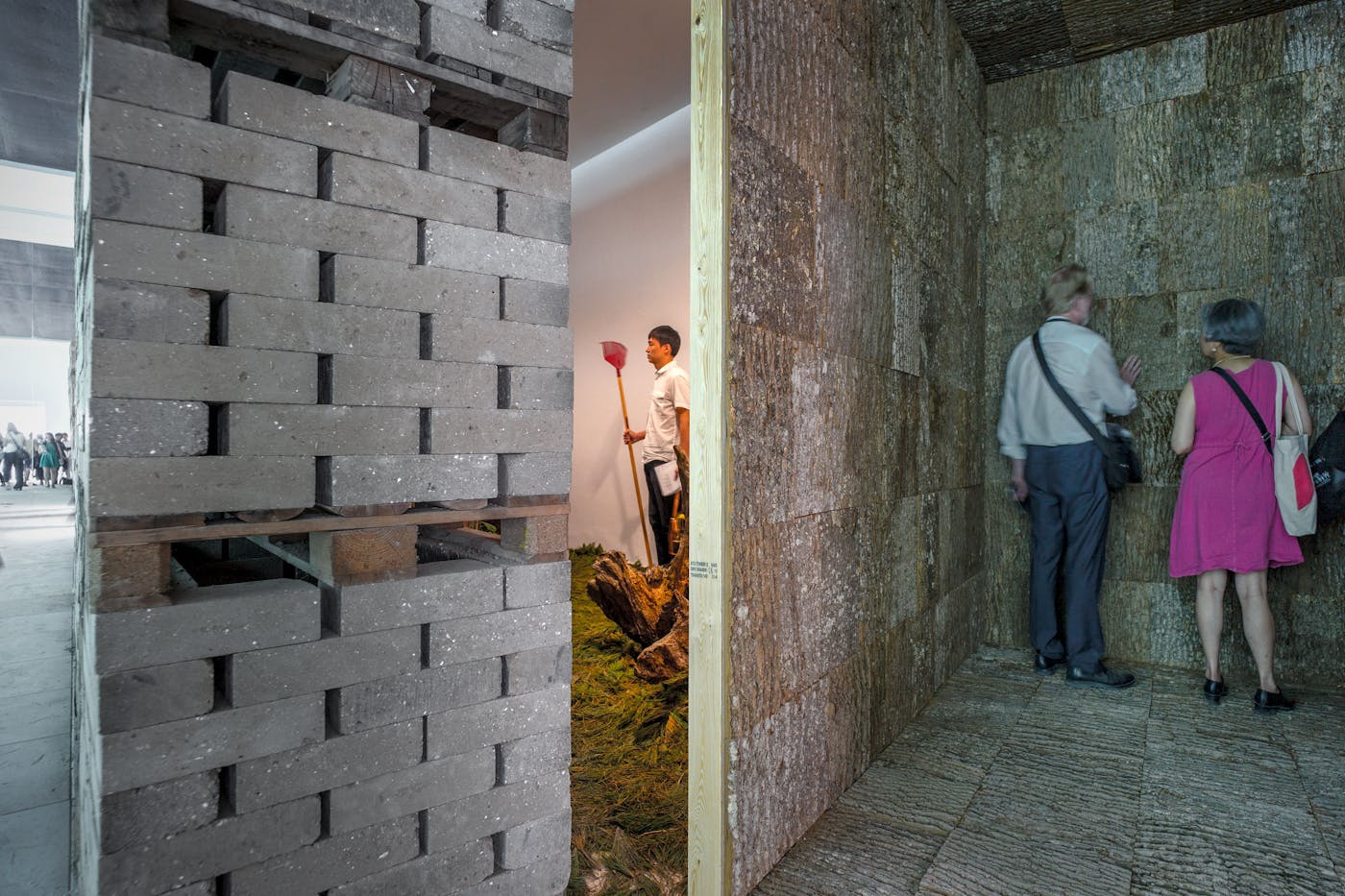Empowerment of Aesthetics —
Venice Architecture Biennale
In 2014, the founder of SLA, Stig L. Andersson, was asked to curate the Danish Pavilion. The resulting exhibition reintroduces the power of aesthetics as an essential complementary to the rational.

Curious for more?
Line Agnes Bjørløw Skjærlund
Head of Business Development, Associate Partner
Location
Venice, Italy
Year
June — November 2014
Client
The Danish Ministry of Culture
Role
Curator of the Danish Pavillion
Partners & Collaborators
DAC - Danish Architecture Center
What do butterflies, quantum mechanics, poetry, and dirt have to do with architecture? In the Danish pavilion of the Venice Biennale, you were invited to sense, wonder, be curious, and reflect when you meet the smell of dirt, read Niels Bohr’s letter to Einstein, hear the sound of poetry, and bury your toes in pine needles. The pavilion reintroduces the forgotten power of aesthetics as the complementary to the rational. It argues that the two together should form the foundation for our future decision-making.


Bohr and Einstein debated the complementarity of quantum mechanics almost a hundred years ago. In the Danish pavilion, Stig L. Andersson argues that Bohr’s philosophical aesthetic approach – and the forgotten modernity it represents – is critical for our common road into a sustainable future. The Danish pavilion reintroduces the power of aesthetics as an essential complementarity to the rational.
A forgotten modernity meets the future
The curator of the 14th International Architecture Biennale, Rem Koolhaas has asked the national exhibitions to adhere to the legacy of the previous century. By inventing The Nordic Welfare State Denmark assigned architecture a crucial role in planning and, almost obsessively, designing in detail the physical setting for a 20th-century modern, urban, democratic lifestyle. However, today this authentic integration of architecture and welfare culture can no longer be taken for granted. We need to rethink our common future and recall the aesthetic qualities of modernity and let them meet the more dominant rationalistic approach.




Butterflies and poetry
In the exhibition, you are invited to sense, wonder, be curious, and reflect when you meet the smell of dirt, read Niels Bohr’s letter to Einstein, hear the sound of poetry and bury your toes in pine needles.
The exhibition ’Empowerment of Aesthetics’ insists on a new sensuous symbiosis between rationality and aesthetics – between architecture and nature. It is a reflection on the fundamentals of the modern Danish society, which emerged in the mid19th Century: The short pocket of time after the collapse of Romanticism but before the heralded Danish welfare state fully emerged; where the poetic interaction between architecture, literature, art, nature, and science liberated unprecedented energy and a belief in a dynamic society hitherto unseen in Denmark and elsewhere
“My ambition is to present the interrelationship of forgotten, repressed or underexposed parts of the dynamic Danish modernity. Not only in the history of architecture, but also in science, art and poetry.”
— Stig L. Andersson




Fundamentals
Come explore the fundamentals of our office together with us
fund. 27
White
Read more







fund. 20
Sakuteiki
– The Book of Garden
Read more
fund. 19
Essay: The Bark Room
Read more

fund. 26
Atmosphere
Read more




fund. 26
Sound
Read more

fund. 12
Mist
Read more


fund. 25
Roots
Read more






